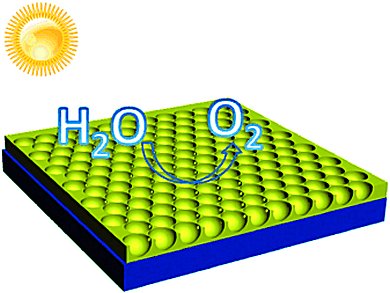Liwu Zhang and Detlef Bahnemann, Leibnitz Universität Hannover, Germany, have developed a facile and economic method to prepare nanovoid Bi2WO6 2D ordered arrays by a simple self-assembly procedure. The arrays were then investigated as photoanodes for water splitting under visible-light irradiation.
Polystyrene (PS) particle suspensions in 1-butanol have been added dropwise onto a water reservoir to form long-range ordered monolayers. These have subsequently been collected onto conductive glass substrates. These were then dip-coated into an aqueous solution containing Bi2WO6 as an amorphous precursor.
This 2D nanoarray structure shows great potential as anode for photoelectrochemical water splitting. The electrode exhibits a much higher photocurrent density and photon-to-H2 conversion efficiency than a conventional film electrode with a similar thickness. This indicates that the 2D array structure can achieve a higher photon energy conversion efficiency even with a reduced amount of semiconductor material. The enhanced conversion efficiency is explained by a lower bulk charge-carrier recombination rate owing to a shorter hole diffusion length, larger surface area affected by the electric field in the Schottky region, and a reduced light scattering within the 2D array.
- Synthesis of Nanovoid Bi2WO6 2D Ordered Arrays as Photoanodes for Photoelectrochemical Water Splitting,
Liwu Zhang, Detlef Bahnemann,
ChemSusChem 2013.
DOI: 10.1002/cssc.201200708



